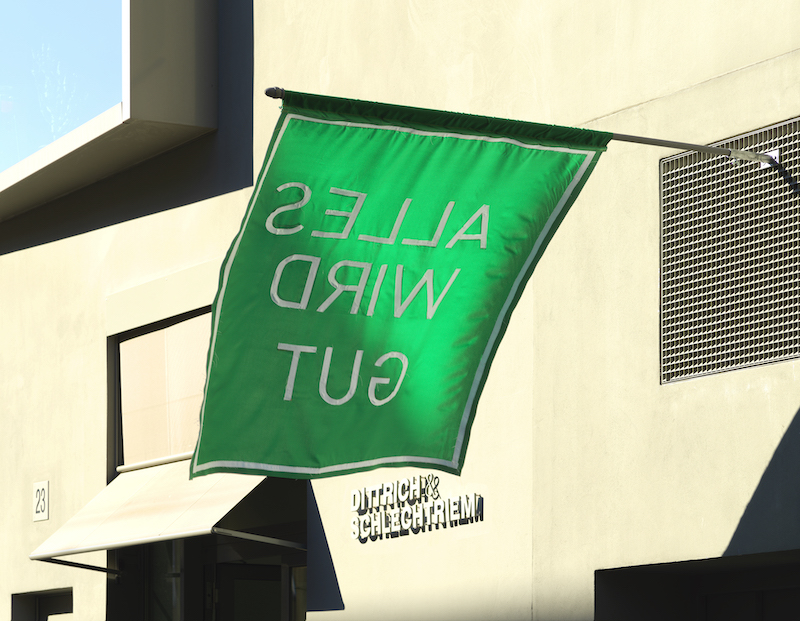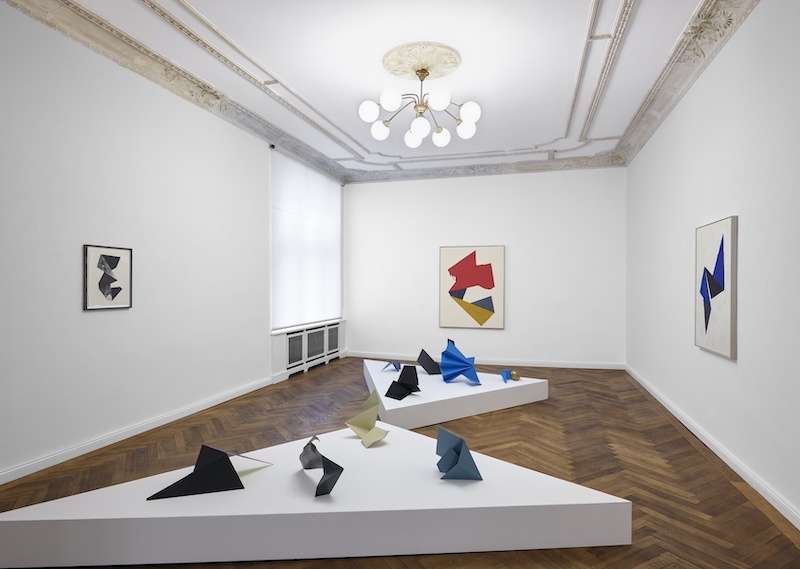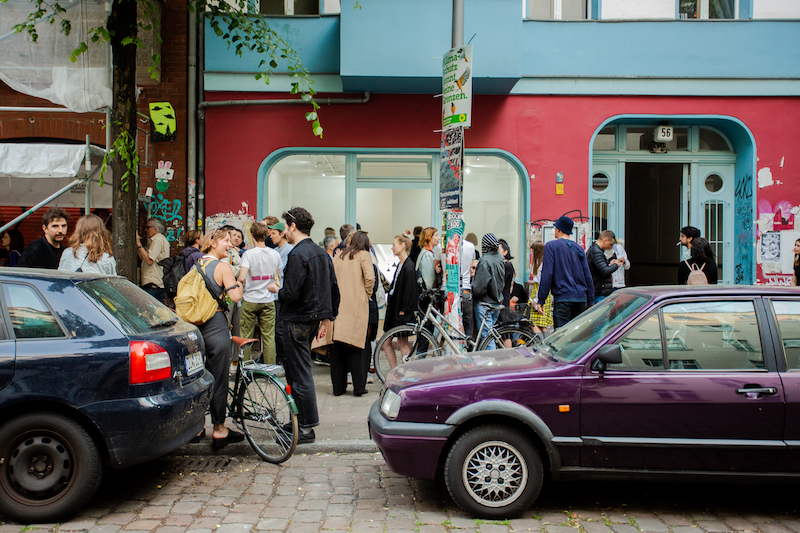Article by Elizabeth Schippers // May 04, 2020
The current global pandemic has triggered a frantic exploration of the possibilities of the online art market, resulting in mass-scale art events like Art Basel moving their offerings online. Virtual tours, interactive exhibitions and online auctions have quickly shifted the gallery space to the digital sphere. However, with social distancing politics now firmly in place, governments are looking for ways to boost the economy and carefully but swiftly get things “back to normal” as soon as possible. As of last week, galleries across Berlin have tentatively been opening their doors again. With this transition comes a reflection on the concept of the gallery space and the ways in which galleries and museums can move forward as they shift from the digital landscape back to real life.

Simon Mullan: ‘Alles wird gut’ (Everything Will Be Alright), 2020, hand-sewn textile flag, 170 x 150 cm, installation view at Dittrich & Schlechtriem // Photo by Jens Ziehe, courtesy of Dittrich & Schlechtriem
On April 22nd, Dittrich & Schlechtriem opened their series of exhibitions entitled ‘Berliner Luft,’ which highlights the current works of a different artist each week. The first artist exhibited with this program was Andreas Greiner, who explored the ways in which humanity affects biological processes. As I approached the gallery, I was met with by textile work by Simon Mullan titled ‘Alles wird gut’ (Everything Will Be Alright), and, a few seconds later, a sign that explains to me that visits are limited to fifteen minutes and that visitors are required to wear face masks. I was told that the exhibition was downstairs, and in the cool basement, I encountered more sterility: a neat circle of seeds, counted, arranged; a digital rendering of a forest; artefacts of an outside world, distanced from the viewer with glass and pixels. In his series ‘Jungle Memory,’ Andreas Greiner uses an Artificial Intelligence that has been fed thousands of pictures of forests, samples that help the AI generate its own conception of a “forest.” Samples include endangered forests in Germany, Chernobyl and Poland. ‘Jungle_Memory_0011’ (2019) is a rendering of these pictures as they have been laid on top of each other, creating an image with a texture not unlike oil painting.
With ‘Berliner Luft’, Dittrich & Schlechtriem invites the public back to the physical gallery and shuts off its digital presence. “There will be no online documentation of the exhibitions,” a representative of the gallery tells me. “The small exhibitions are directed at people who want to visit us and experience the work in the gallery.” As travel bans persist, the gallery turns its attention towards the community. He tells me that the exhibitions are mainly for the Berlin public, and those in the neighbourhood, who are slowly being reintroduced to the public sphere.
This focus on community is a common trend among reopening galleries. During my conversations with other gallerists about their transition from the digital sphere to the physical, Carolin Leistenschneider, director of Contemporary Fine Arts (CFA), told me: “The current situation has pushed forward digital activities and released creative powers that not only helped us to stay in touch with our collectors, artists and visitors in this difficult time, but also extended our network by reaching people we otherwise wouldn’t have connected with. It showed us again that a gallery is not only a commercial marketplace but also part of a lively community that brings human beings of many different fields together.”

Katja Strunz: ‘Space Lips’, 2020, installation view at CFA Berlin // Courtesy of the artist and Contemporary Fine Arts Berlin
Benjamin Hammond, director of Weserhalle, explains that they have been taking this time to meet and connect with their community in Neukölln. They are working towards collaborating with galleries and creating a more cohesive community. “Everyone is usually occupied by their own events. Now it is finally time to look to other places and get to know these people. We’re in the process, but we’ve already started building online structures to manage private appointments, improving our online presence, and meeting with our community—both creators and curators—and strengthening these connections.”
Though galleries are eager to invite the public back to their physical buildings, this intermezzo of a contactless art world has left its marks, and various projects set up in the frenzy of online exploration have proven to be beneficial and will be carried over into this period of shifting landscapes. Weserhalle’s ‘Artist is Live’ is an informal and relaxed dialogue between the gallery and the community, concentrating on the voices of their own neighbourhood. This project, instigated to bridge the period in which Weserhalle was closed, will continue after it reopens its doors. “The concept of the gallery is always transforming and evolving in some sense. The current situation has simply accelerated the process.”
CFA, too, has experienced some of its digital projects to be a success. “As well as being in touch with our audience on social media like Instagram and providing 3D tours of our shows online, we just set up our first podcast ‘CFA TALKS’ (available on Spotify). After a talk with Werner Büttner, we just published a second talk with Georg Baselitz. This series is certainly something that will be carried over to the ‘after Corona’ period.”
Weserhalle has also launched an online auction for artists based in Berlin and is open for private appointments. CFA opened their gallery last week, now presenting the exhibition ‘Space Lips’ by Katja Strunz, which is also still offered as a virtual tour. Dittrich & Schlechtriem has just announced the new instalment of ‘Berliner Luft’ featuring artist Dorian Gaudin. The announcements for each exhibition in their series will only give the artist’s name and a short text about the exhibition. No images of the artwork will be made public online. Extra encouragement to get out there and see it for yourselves!

‘Sahihi – the Last Supper’ at Weserhalle // Courtesy of Weserhalle


























